Fix: “Specified Procedure Could Not Be Found” on Windows
There have been quite a few reports by users that they are facing the ‘The specified procedure could not be found’ error on their Windows 10 and 11 operating systems. This particular error is often caused by corrupt Registry entries, malware, generic corruption errors, incorrect installation of programs, and an outdated Windows operating system.
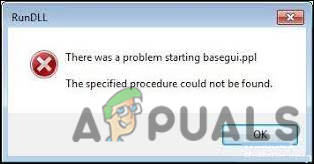
If you are facing any of these errors, we have compiled a list of effective troubleshooting methods that worked for several other users. Proceed with the one that suits your situation the best.
Run an SFC Scan
There are certain tools and commands in Windows OS that can be used to fix system files in the event of damage. One of the powerful and well-known repair tools is the System File Checker (SFC). A command-line tool called System File Checker (SFC) checks all the files protected by system file protection to ensure they are working as expected and attempts to repair those that are not.
Whenever you suspect your system files have been corrupted or if something seems wrong with your system, it is a good utility to run.
You can run this utility using Command Prompt and Windows Terminal, but make sure you are logged into Windows as an administrator before you proceed with it.
Here is how you can run an SFC scan on Windows 11:
- Press the Windows + R keys on your keyboard together. This will launch a dialog box.
- Type cmd in the text field of the dialog box and press Ctrl + Shift + Enter together to launch elevated Command Prompt.
- Inside the Command Prompt window, copy and paste the command mentioned below and hit Enter.
sfc /scannow

Perform an SFC Sca
- Once Command Prompt executes the command successfully, restart your PC and check if it fixed the issue. If it persists, proceed with the method below.
Scan Your Computer for Malware
Checking your computer thoroughly and correctly for viruses and other malware, such as Trojan horses, rootkits, spyware, worms, etc., is also an imperative step in troubleshooting. An attack can compromise weak passwords, obtain access to systems, penetrate networks, and disrupt your day-to-day activities. Malware also makes you prone to cyber-attacks and can result in errors like the specified procedure error, which is why it is important to deep clean your system.
The process of scanning your PC for viruses and other malware is simple and can take several minutes or even longer. As more files are added to your computer, and as the computer becomes slower, the longer it takes to scan. You can do so with the help of any third-party antivirus installed on your PC. If you do not have one installed, then head over to our guide on the best antivirus programs of 2022 and download the one that suits your needs the best.
Use System Restore
The Windows OS takes a screenshot of your system’s state every time before you perform a critical operation. Using this feature, you can revert your system to a previous point in time (when the snapshot was taken). This is specifically helpful when you are facing an error and want to go back to a state when your operating system was working fine.
Here is how to revert the system back to a previous state when the specified procedure error didn’t exist:
- Launch Control Panel and head over to System and Security > System.
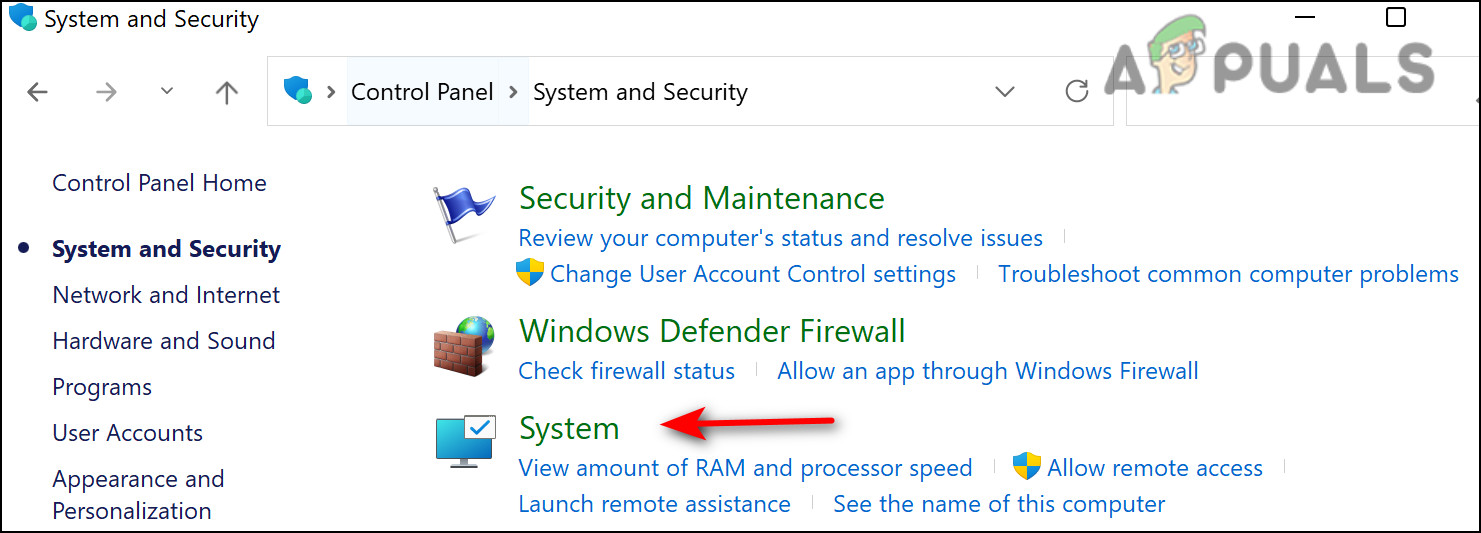
Open security - In the next window, click System Protection.
- Now head over to the System Protection tab and click on the System Restore button as shown below. If this button is greyed out, then you do not have a restore point on your system. In that case, jump to the next method.
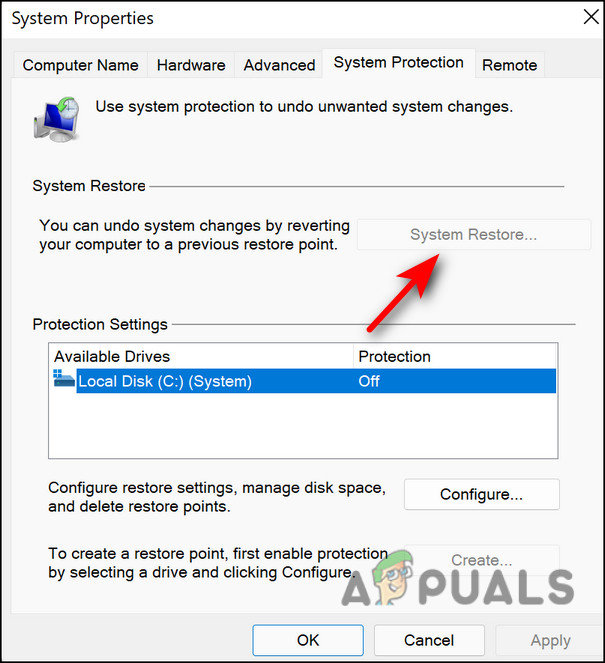
Click system restore - Now follow the on-screen instructions to proceed. If a dialog box pops up on your screen, click on Recommended Restore.
- After the operation completes, your system will automatically reboot. Upon reboot, repeat the action which was causing the error and check if it appears again.
Repair Microsoft Photos
If in case the specified procedure error appears when you try to access a jpeg or mp4, then there is a chance that the Microsoft Photos installation on your Windows is corrupt or outdated. If this scenario is applicable, you should be able to fix the issue the hand by repairing the utility via Windows Settings.
Here is what you need to do:
- Press Windows + I keys simultaneously on your PC to open Windows Settings.
- In the Settings window, click on Apps from the list of options available.
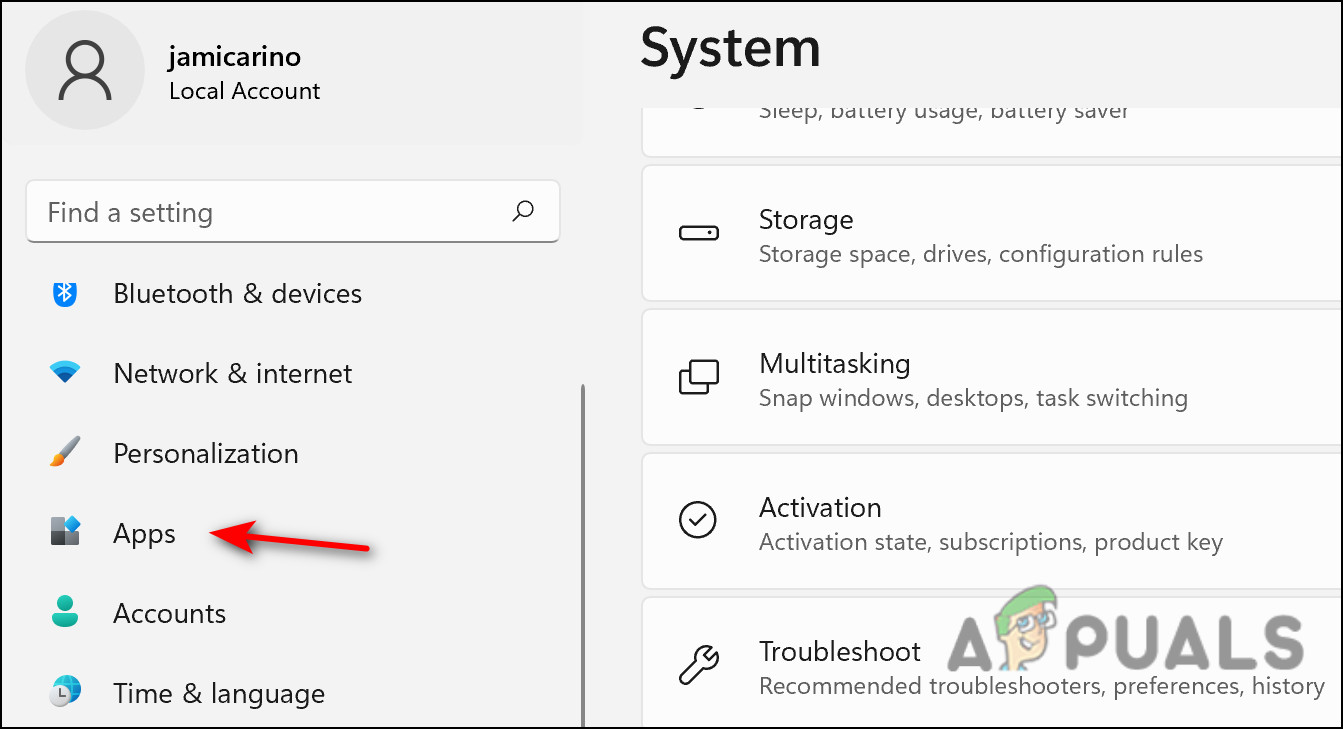
Click apps - Select Apps & features and in the next window, look for Microsoft Photos.

Choose Microsoft photos - Click on the three-dot menu against it and select Advanced options.
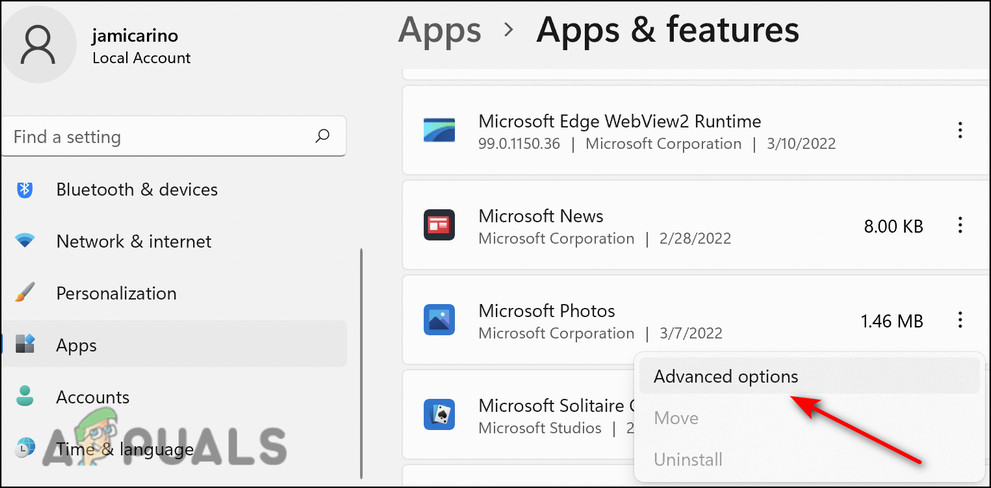
Access Advanced options for Microsoft Store - Now, scroll down till you see the Repair button.
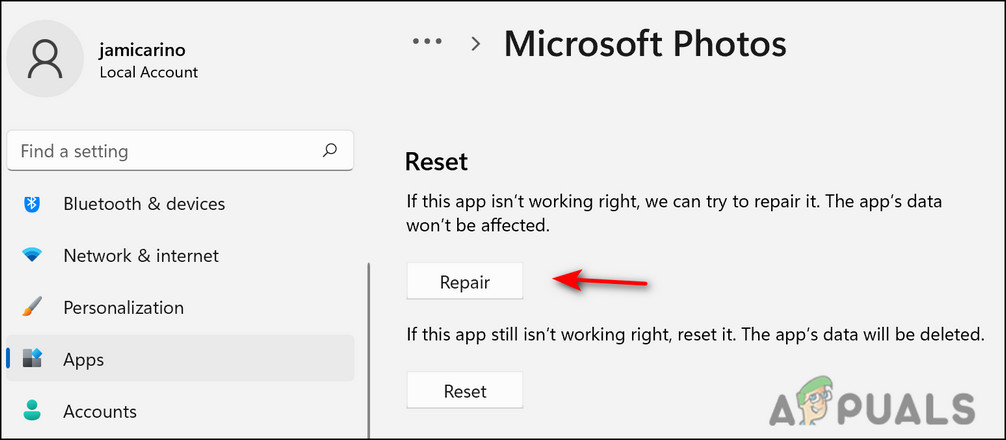
Click repair - Click on it and wait for the process to complete.
Install Pending Updates
Updating Windows regularly is essential for ensuring glitch-free operation. These updates often include important security patches as well. This might come as a surprise, but most of the harmful malware we encounter is caused because your system hasn’t installed the critical security updates alongside others. This malware takes advantage of software vulnerabilities in common applications such as operating systems, resulting in issues like the specified procedure error.
If you haven’t installed the latest updates recently, follow these steps to install them:
- Type ‘Windows Update Settings‘ in the search area of your taskbar and click Open.
- Click on the Check for updates button in the right pane. If there are any updates available, your system should display them. In this scenario, take your time to install all the pending updates.
- Once done, restart your PC and check if the issue is resolved.
Reset Your PC
If none of the methods mentioned above have worked for you and you are still facing the ‘specified procedure’ error, then we encourage you to go ahead and reset your PC. Doing so will return the operating system to its original state – just the way it was when you installed it.
Resetting is a good way to fix software-related issues in Windows that do not seem to go away with the conventional troubleshooting methods. Moreover, you can even choose to keep your personal files and data during this process!
Another option is performing an in-place upgrade, which will repair the system files and update your operating system. This, however, is a slightly lengthy process so we recommend proceeding with it when you have some free time on your hands.





